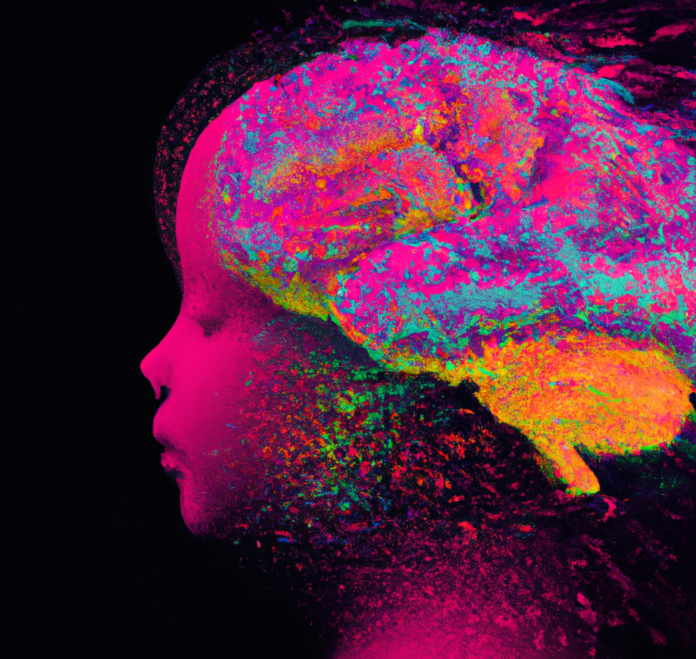Written by Esther Swamidason
The Remarkable neuroplasticity of a developing brain
The human body is a marvel of development, with each part growing and evolving until we reach adolescence. Bones lengthen, muscles strengthen, and organs mature – it’s a journey of transformation. Amidst this incredible development, there’s one part of our body that stands out as remarkably malleable and ripe for shaping: the brain. From the ages of 1 to 5, a child’s brain undergoes a phase of extraordinary neuroplasticity. Neuroplasticity refers to the brain’s remarkable ability to rewire itself in response to experiences and learning.
During these early years, the brain is like a sponge, soaking up knowledge and forming neural connections at an astonishing rate. This period is crucial for setting the foundation for a lifetime of learning and development. As parents and caregivers, one of our most important responsibilities is to guide and support our children in reaching their optimum potential. This involves not only providing them with the basic necessities but also fostering their intellectual and physical development.
Investing in their future by harnessing children’s neuroplasticity
Investing in a child’s future means more than just providing for their physical needs. It’s about nurturing their intellectual and emotional development, guiding them to reach their optimum potential and become their own unique self! Some key skills that are often overlooked in their prime stages of development are listed below.
- Critical Thinking: Critical thinking is the ability to analyse information, evaluate arguments, and make reasoned decisions. Ask open-ended questions like, “Why do you think that happened?” or “What would you do differently next time?”
- Scientific Thinking: This involves observation, experimentation, and drawing conclusions based on evidence. Engage your child’s scientific curiosity by conducting simple experiments at home. Encourage them to ask questions, make predictions, and record their observations in a journal.
- Problem-solving skills are essential for overcoming challenges and making informed decisions. Encourage problem-solving by presenting age-appropriate puzzles, riddles, and brainteasers. Collaborative activities, such as building with building blocks or constructing intricate Lego sets, promote teamwork and problem-solving.
- Creativity and Imagination: this is a valuable skill that helps children think outside the box and come up with innovative solutions. Encourage creativity through activities like storytelling, art projects, and imaginative play. These activities stimulate both critical thinking and creativity.
By engaging in activities that promote critical thinking, scientific thinking, problem-solving, and motor skills, we empower them to reach their full potential. Why is it essential to provide added assistance in shaping a child’s development? The answer lies in the need for an updated educational system. Our world is constantly evolving, with advancements in technology, changes in transportation, innovations in clothing, and improvements in housing. Yet, the school curriculum, often rooted in traditional subjects like math and science, has not kept pace with these transformations.
Innovative teaching programs that nurture children’s neuroplasticity
Fortunately, there are educational institutes that recognize the need for harnessing children’s neuroplasticity and are adopting innovative teaching methods. Let’s delve deeper into such niche educational approaches that harness children’s neuroplasticity:
- Activity-Based Learning: Instead of traditional lectures and rote memorization, students engage in various activities and experiments that promote understanding and critical thinking. In this method, students might conduct science experiments, build models, engage in group projects, or participate in real-world simulations. These activities not only make learning enjoyable but also help students grasp complex concepts more effectively.
- Student-Centered Learning shifts the focus from the teacher as the primary source of knowledge to the student as an active participant in their own education. In student-centered classrooms, teachers act as facilitators, guiding students in setting goals, selecting learning resources, and designing projects. It recognizes that each child is unique, with different learning styles and strengths, and tailors education to suit individual needs.
- Waldorf Education: Waldorf education is a holistic approach that aims to nurture the intellectual, emotional, and physical development of children. The curriculum evolves with the child’s developmental stages, considering their neuroplasticity. Children engage in artistic activities like painting, music, and drama, fostering creativity and imagination.
- Montessori Education: Montessori education is renowned for its child-centered approach, emphasizing independence, self-directed learning, and a prepared environment. Montessori classrooms are carefully designed to encourage exploration and hands-on learning. The learning materials are designed to be self-correcting, promoting problem-solving and self-discovery.
- Reggio Emilia Approach: This originated in Italy. In Reggio Emilia schools, children engage in long-term projects based on their interests and questions. Teachers act as co-learners and document the children’s progress, helping them build upon their discoveries. This approach stimulates neuroplasticity by allowing children to explore their own interests and make sense of the world around them.
To conclude…
Incorporating these novel teaching programs into a child’s education can provide an enriching and neuroplasticity-enhancing experience. Each approach recognizes the unique abilities of a child’s developing brain. They strive to create a stimulating environment that fosters their uniqueness. By embracing these methods, parents and educators can truly invest in the future potential of children. We can help them become well-rounded individuals ready to face the challenges of tomorrow.


